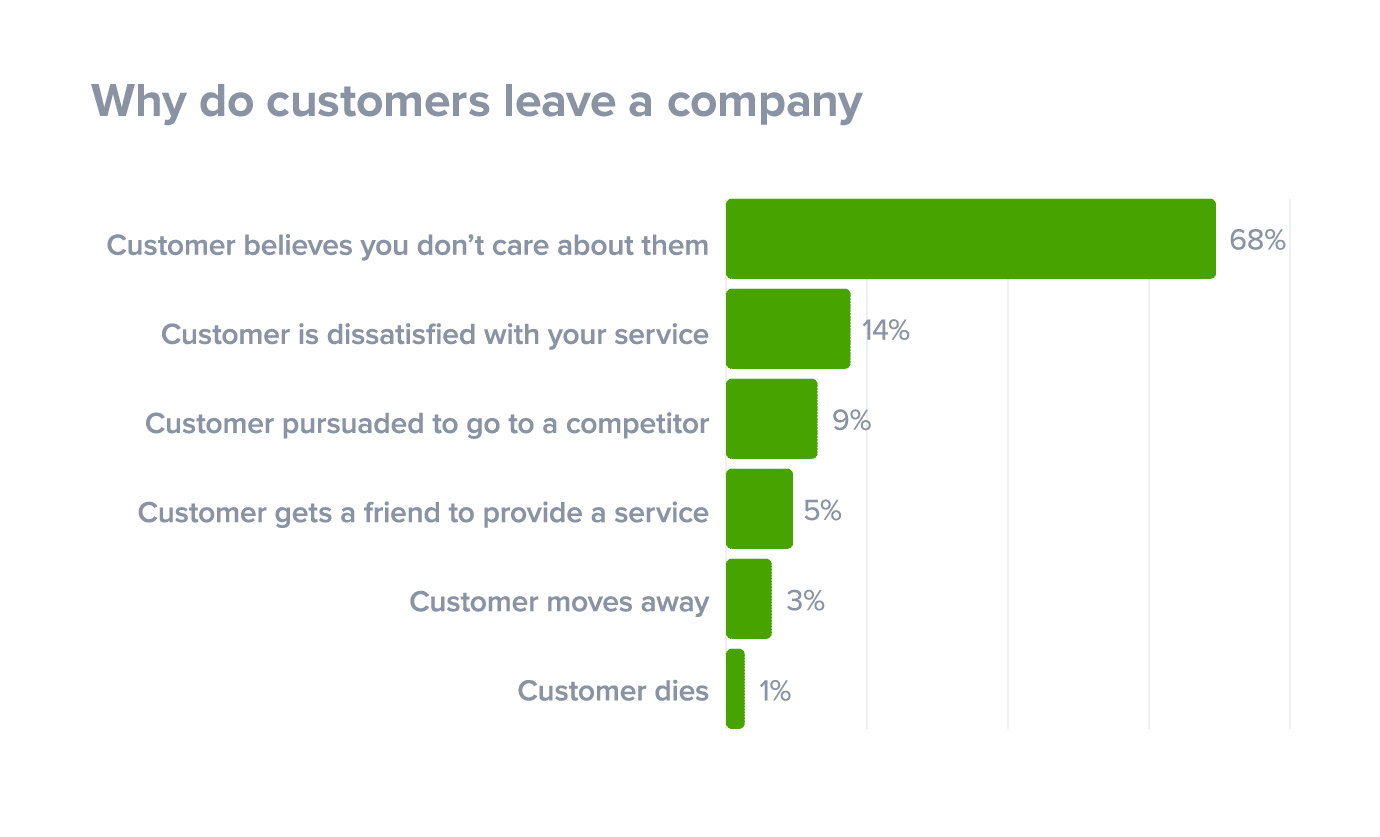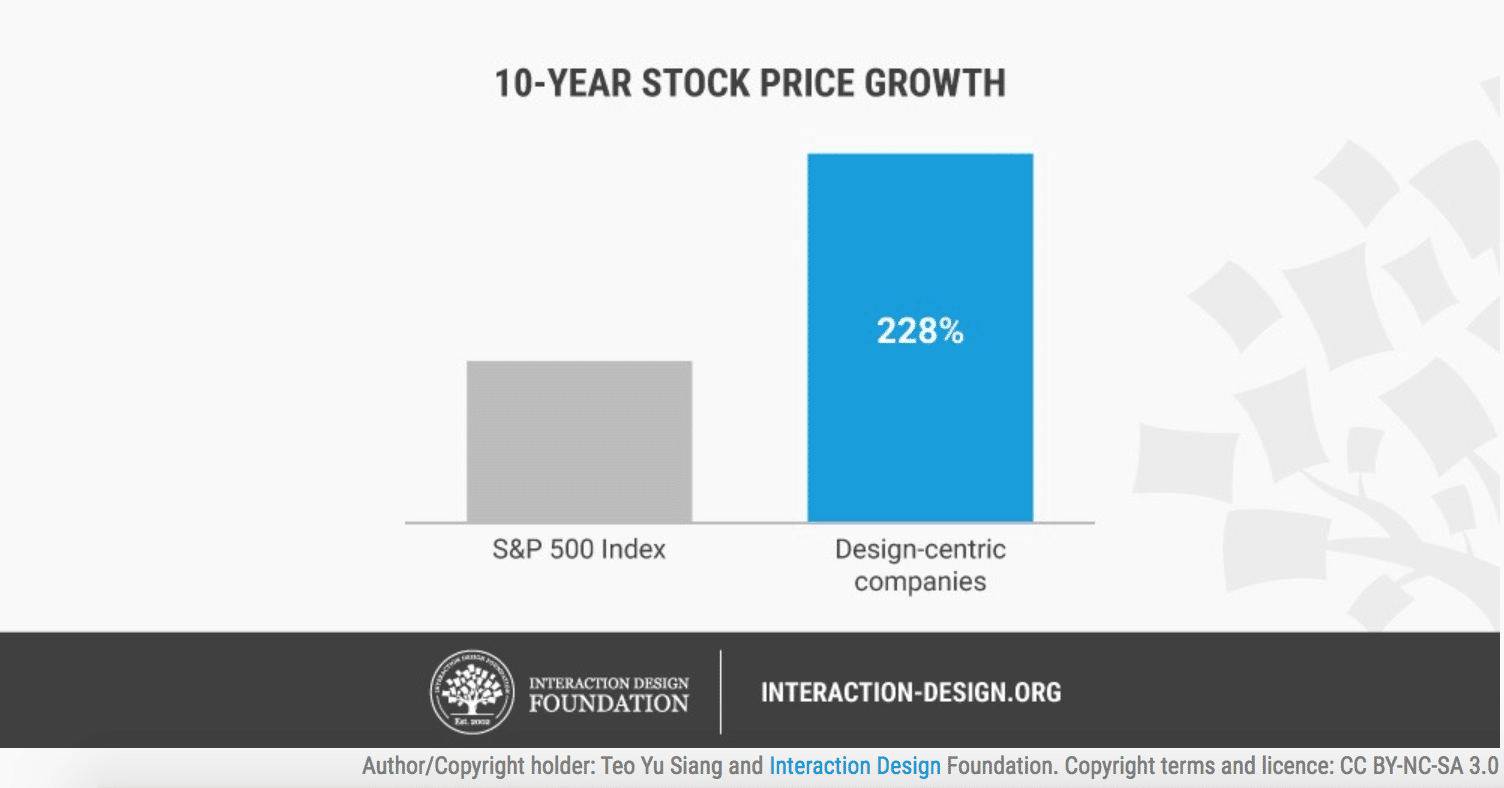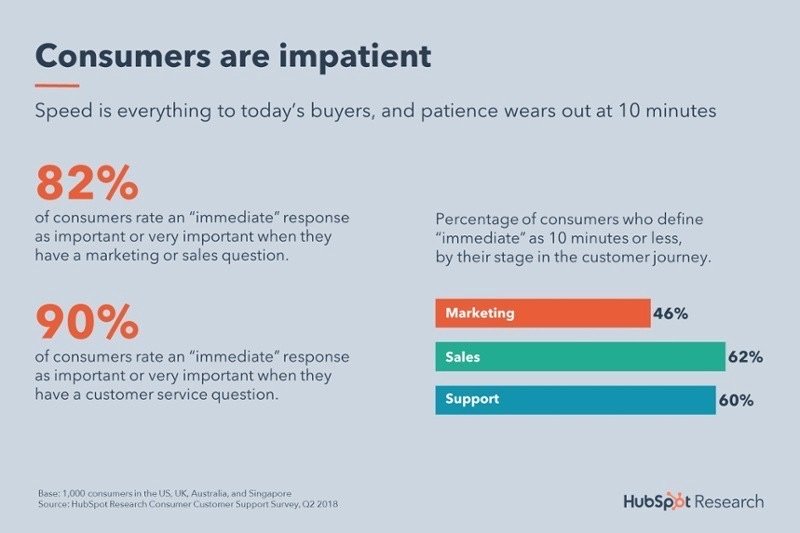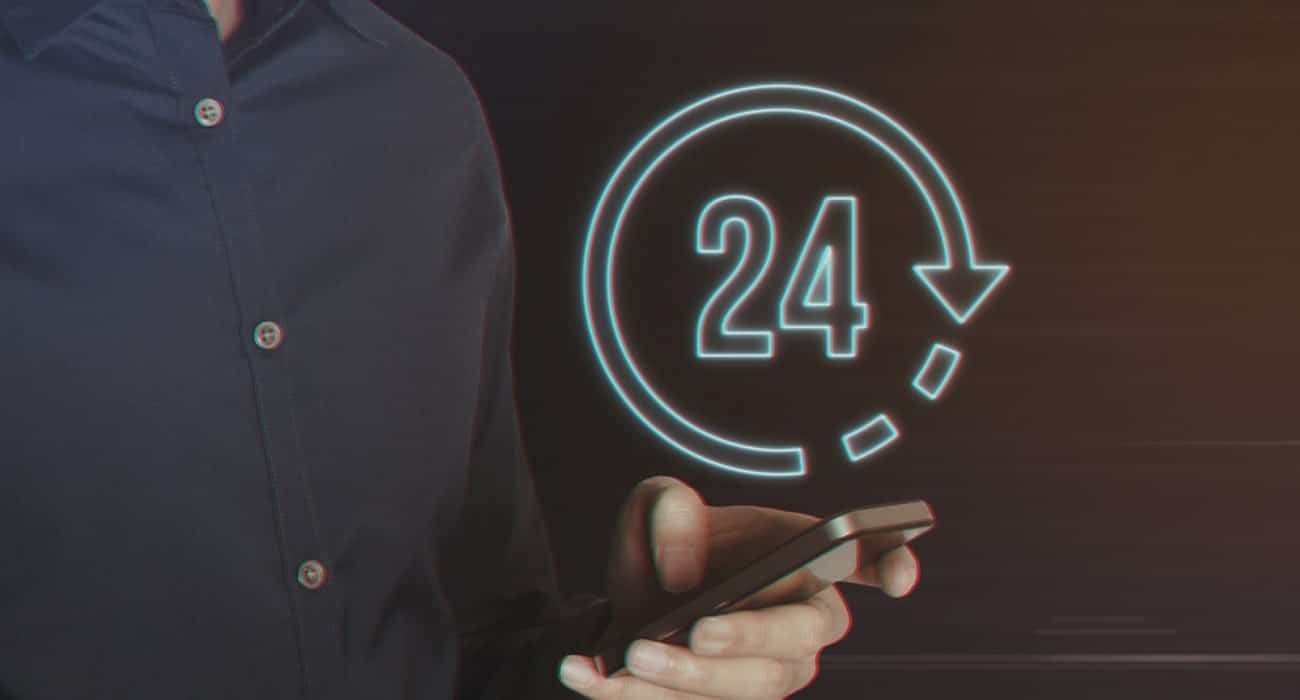100 years ago, you only had to worry about serving the customers who’d physically enter your store.
50 years ago you’d also have to consider those ordering through things like catalogs, mailing campaigns, or in response to TV and radio ads.
In both circumstances you’d be looking at days or weeks to respond to customer questions – Mass corporate communication was handled through tractional snail mail.
But things have changed.
Thanks to the internet and increasing popularization of mobile devices, there’s never a moment where your customers can’t contact you.
In theory, this sounds great. It gives you an almost unlimited number of opportunities to drive sales and build relationships.
But the truth is that it puts you in a potentially dangerous position.
Your customers aren’t just contacting you at all times of the day, they’re also expecting round the clock responses. And if they don’t get it, they’ll post their disappointment in the most public of places.
24-hour service is the new norm, and if you’re not providing timely responses to your customers around the clock, you’re going bleed customers at every turn.
What Swift Service Does for Digital Brands
A couple of years ago I remember speaking to a business owner who mentioned how 24-hour service simply wasn’t necessary for his business.
The products he sold weren’t critical for quality of life and so users could stand to wait 12 hours for a response. Any sort of delay wasn’t going to negatively affect their happiness.
It’s the wrong way to think about it.
It’s the delay itself that causes people unhappiness and to fall out with your brand. People don’t want to feel like a ticket number to be processed at your leisure.
They want to be treated as an individual. If you look at the reasons customers leave businesses, you’ll see a common trend.

The top two reasons are directly related to the speed and personalization of your service. And they’re both common causes for the third largest reason people leave.
So all you have to do is respond within a few minutes with a personal message, right? To say, “Hey Mike, how can I help?” immediately after they reach out instead of the generic “Your request is important to us. Our customer success team will respond within 24 hours”.
That’s kind of true. A simple, swift, and perosnlized service will do wonders for your brand.
However, as with most things in business, the simple concepts are oftne the most difficult to implement well.
The Difficulty of 24 Hour Service as a Small Brand
The primary difficulty small brands are going to face is with time constraints and manpower.
Within small brands, the customer support is often handled by 1-3 dedicated staff or it’s added as a secondary function of the marketing team.
When it’s a secondary function response times are going to suffer. The team you assign to “help out” are going to view support as a hindrance to their day-to-day tasks.
When it’s a small number of people, they’re usually all within the same locale and so tied to the same working hours. As soon as 6 pm rolls around, customer service times are massively delayed or completely nonexistent.
Both solutions simply aren’t good enough with modern consumer expectations.
So brands generally implement one of two options.
- Outsource to a separate specialist company. Often located somewhere like India or the Philippines.
- Optimize parts of the customer journey to both prevent the need for help whilst also automating certain responses presenting the image of 24-hour assistance.
There are pros and cons to both solutions, however, the cons of the first idea are far worse worse.
When you’re outsourcing to a second company, they tend to focus on the metrics they think are important. We’re talking things like tickets closed, speed of response, and availability.
These are important areas, but only if the customer leaves happy.
There’s no point in responding quickly, closing tickets, and having 24-hour responses if the customer’s question isn’t answered successfully.
And when you’re having an outside brand communicate on your behalf, you’re sacrificing the deep product knowledge only your team can provide and losing the information you need to improve your product offering.
Outsourced customer service might save you a few bucks, but you can’t fake the in-depth product knowledge and company culture only an in-house rep can bring.
You’ve got to look at how you can streamline and automate key areas of your customer service so your customer support team are only helping those who truly need it.
Here’s how.
1 – Optimise for Self-Service
Prevention is better than a cure.
If you can make your processes so simple that people won’t need any help with the mechanics of purchasing, delivery, and the general on-site experience can drastically reduce the need for customer support.
The Nielsen Norman Group found that 64% of medium-complex customer journeys cause customer service requests because users simply couldn’t figure out what was required of them.
Putting time and money into improving the user experience by designing your site to make it as accessible as possible is proven to garner positive results.
Design focused companies saw a 228% increase in stock price growth over a 10-year period – which is huge.

So before you look at what you can do to streamline your support processes, first examine your site with some in-depth user research.
Look at the improvements you can make to design of the user journey to minimize (or eradicate) certain customer support requests.
2 – Template, Template, Template
Once you’ve managed to reduce the number of requests you’re getting through, you’ll have an easier time categorizing what customers are asking.
Once you have added the most common questions into categories, you need to prioritize them. You want to find the questions that both appear frequently and have a simple blanket answer and place them at the top of your priority list.
These are the questions you can template the answers to most easily and don’t need human intervention.
Templates like this will save your customer service team hours of time every single day whilst also allowing them to respond to more queries in record time, something that’s key in increasing the trust users have in your brand.

However, templates alone aren’t all that’s needed for the best service.
3 – Automate Those Templates
Templates are incredible at increasing the speed of response IF there’s someone in the office at the time of the request.
If you’re relying on a small team and everyone’s gone home, you’ve 2 options.
- Take the AirBnB route and patch all customer requests thought to someone’s mobile, 24-hours per day.
- Automate your new templated responses
Now, I wouldn’t recommend you immediately kick off your customer support with automated responses.
Use the templates for a while and see how they’re being received. Your goal with automation is to reduce the need for human intervention, right?
If your template answers one question but throws up another, you’re not solving the problem. You’re just extending the solution.
Get your success team to use templates and monitor how well they’re being received. Ask them, once per week, how things can be improved with each template.
Once the templates hit a high close rate, then you can automate them safe in the knowledge that there’s no longer a need to step in personally for that question.
4 – Track and Improve
That method of improving weekly doesn’t end as soon as the automation is kicked into effect.
It’s an ongoing method of improvement that never stops.
You have to review your automated responses regularly to ensure that they’re not only still relevant but are actually helping people.
The easiest way to find out how to improve is to implement some form of survey after a customer question has been answered.
You should be asking this through the same medium as the question was answered for highest results.
It doesn’t need to be anything too complex. At the start all you’ll need to know is if the templated response answered the users questions and, if not, how it could be improved.
A maximum of 2 questions will see you collecting ideas for continual improvements.
5 – Until You Can Increase Staff, Share the Load
I once worked in a company where, twice per year, everyone had to man the “emergency phone” for a week.
That phone was on for 24 hours a day and was the out of hours contact for any customer emergencies.
No one liked doing it, but it was necessary for the business. The company incentivized the taking of the phone by offering an extra days holiday for every week you had it.
I’m not saying that you must implement something similar, but you should be willing to implement some way to share the load.
Not only will it make it easier to manage, but it will be an incredible learning experience for anyone in the company.
There are brands out there like Ahrefs who require all staff in their marketing department to do 1 year in the customer success team to better understand the company, tool, and customer queries. In this piece, their head of marketing Tim Soulo explains,
“We can’t give you a job in our marketing department.
Don’t get me wrong, your CV looks good, and I don’t doubt your skills.
But in our company there’s a rule — you can’t be hired to our marketing team. You can only be “promoted” there.
So, what I can offer you is a position at our Customer Support department, with an option to be promoted to marketing in the next year or so.”
Sharing the load is key to providing a better customer experience in all areas of your business. Incentivize it if you must, but make sure everyone has a hand in helping your customers achieve their goals.
It’s an Iterative Experience
Providing a true, 24-hour customer support service experience isn’t something you can setup overnight.
You can reduce the number of queries your team has to personally deal with by a huge margin within a week, but to get to full automation it’s going to take a lot of time, numerous tests, and a handful of failures.
But the key goal you’re aiming for is always the same.
Templated responses that are eventually automated.
Those templated responses will either answer the user’s question outright or let them know what’s happening your end whilst your team get the answer together over a period of inactivity or research.
As we become more connected to our customers, having this level of service is key to growing your brand, and you need the right tool to give you the functionality mentioned above.
If you’re ready to start optimizing your customer support processes, sign up to eDesk for the most powerful customer support platform backed by machine learning and smart templates.
Read More
The ultimate guide to e-commerce customer service




